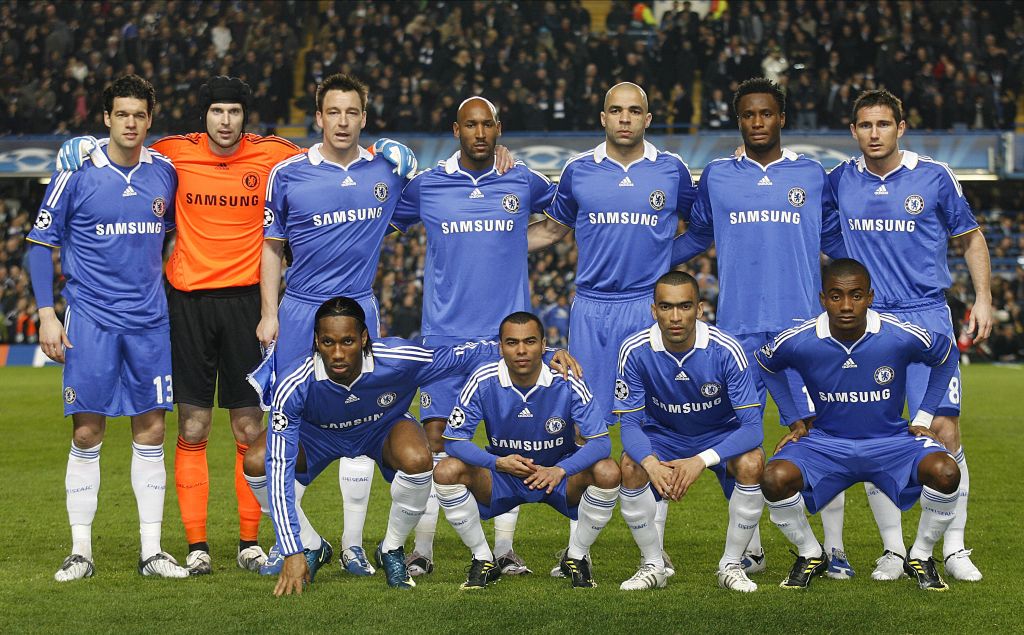Ranked! The 100 best stadiums in the world
The best stadiums in the world from all corners of the globe: this is your ultimate match-going bucket list
10. San Siro
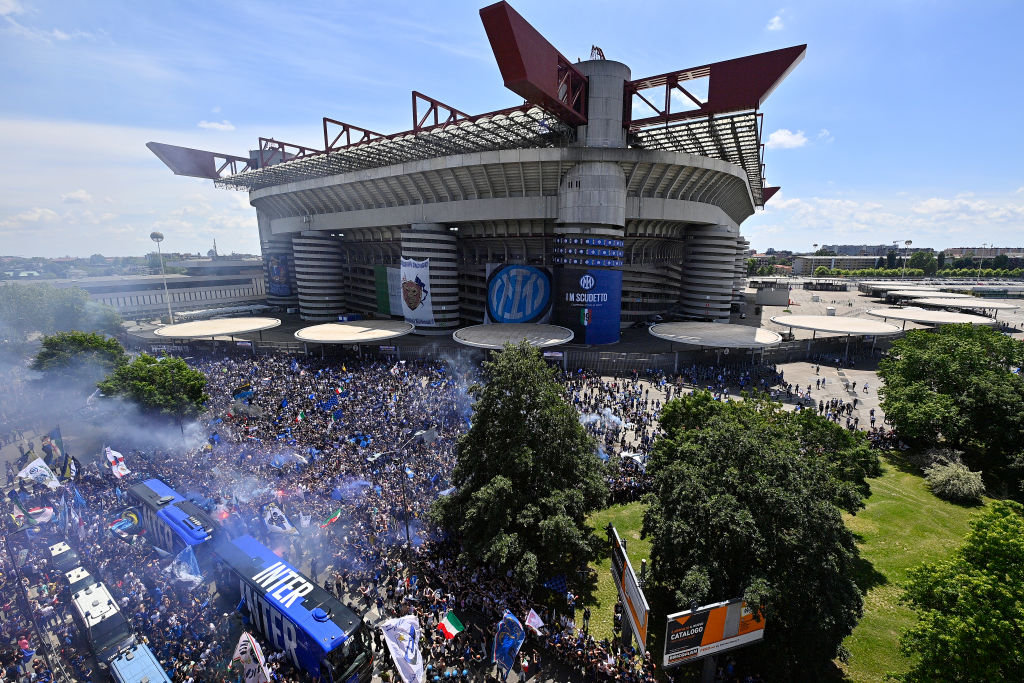
📍 Milan, Italy
🏠 1926
🏟 80,018
Exposed to the elements, Milan has two decaying marvels of incomparable artistic merit in semi-constant need of refurbishment. One is the most studied work of art ever produced, a triumph in perspective that has been in constant evolution since work first began on the wall of the Convent of Santa Maria delle Grazie more than 500 years ago. The other is a football stadium.
Did we just compare the San Siro to Leonardo da Vinci’s high watermark The Last Supper? Yes. If you’ve been there, you’ll understand.
There’s a reason this is Italy’s most loved stadium, home to AC Milan and Internazionale. Set in the city’s leafy San Siro neighbourhood where two-storey houses outnumber the high-rise flats elsewhere, it feels at once a relic and supremely modern.
The stadium itself has been restored and renovated as many times as The Last Supper, too. First conceived in 1925 by Milan president Piero Pirelli, the San Siro was originally intended as an extension of the adjacent Hippodrome horseracing bowl. Yet it’s Italia 90, the tournament that has so shaped the San Siro’s design, that resonates most and offers its enduring legacy.
The San Siro remains on most people’s shortlist of must-visit venues, and unlike many of its Italia 90 counterparts it’s far from crumbling into insignificance, it's still adored. – AM
9. Wembley
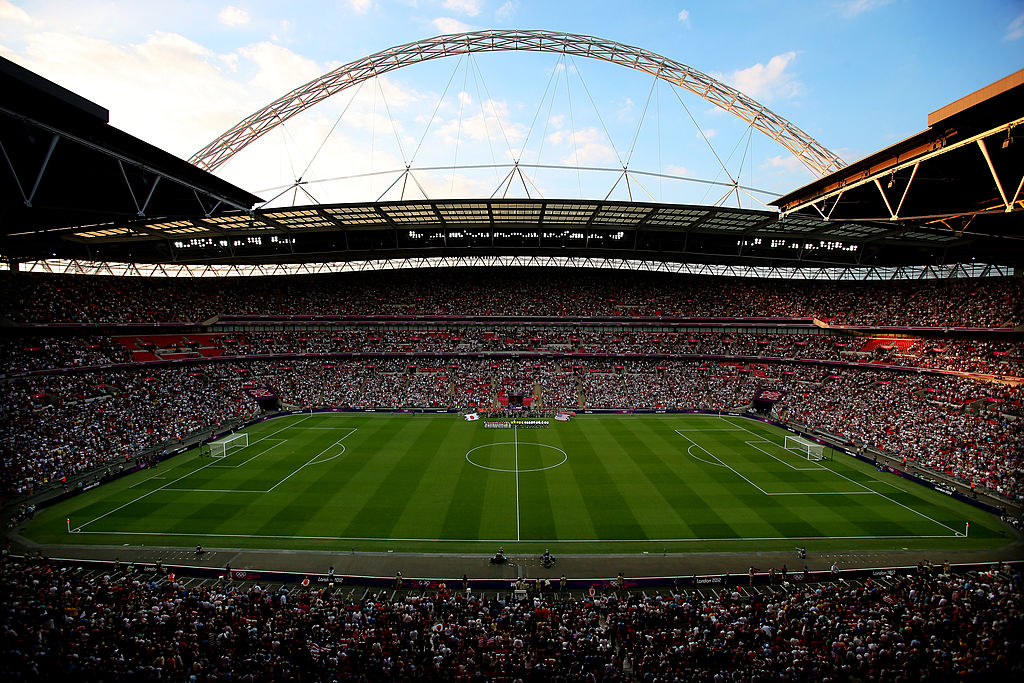
📍 London, Wembley
🏠 2007
🏟 90,000
Get FourFourTwo Newsletter
The best features, fun and footballing quizzes, straight to your inbox every week.
“Wem-ber-lee” are the three most exultant syllables in the football lexicon. In this context, Wembley is more symbolic than actual. No construct of concrete and steel could fulfil such expectations. But that hardly matters, as Hugh McIlvanney noted in his report on the 1966 World Cup final.
“Wembley has occasions that work a metamorphosis, that make grown men persuade themselves the hideously inconvenient journey from London is an adventure and transmute the undistinguished concrete bowl into a ‘seething cauldron’,” he wrote. FA Cup finals, England internationals – not just that 4-2 – European Cup finals, even Football League play-offs can work that metamorphosis, rendering the distinction between old and new Wembley irrelevant. Bereft of fans and players, such stadia are monuments of purposeless splendour.
Yet the venue’s greatest hero must be tobacconist Arthur Elvin, who paid £127,000 for Wembley in 1927, saving what had become a financially unviable stadium from demolition. The way to stop Wembley going to the dogs, Elvin decided, was to send in the dogs. Greyhound racing’s success paved the way for the staging of speedway, rugby league, the 1948 Olympics, boxing, stock car racing, ski-jumping (with fake snow), and daredevil motorcycling stunts (Evel Knievel crashed at Wembley in 1975, trying to soar over 13 London buses). The one ambition Elvin didn’t achieve as Wembley chairman was establishing its own Football League club.
That was almost a century ago – and look at everything it's hosted since. Think of all the memories. Some say it's overused, diluting a trip to the hallowed turf somewhat. With most countries having their own capitals of football, Wembley’s role had changed even before the demolition of the old one started. The idea may appeal purists but giving the likes of North Ferriby United (the 2015 FA Trophy winners) the chance to play in the same stadium as England ensures the new Wembley remains at the heart of English football. – PS
8. Tottenham Hotspur Stadium
📍 London, England
🏠 2019
🏟 62,850
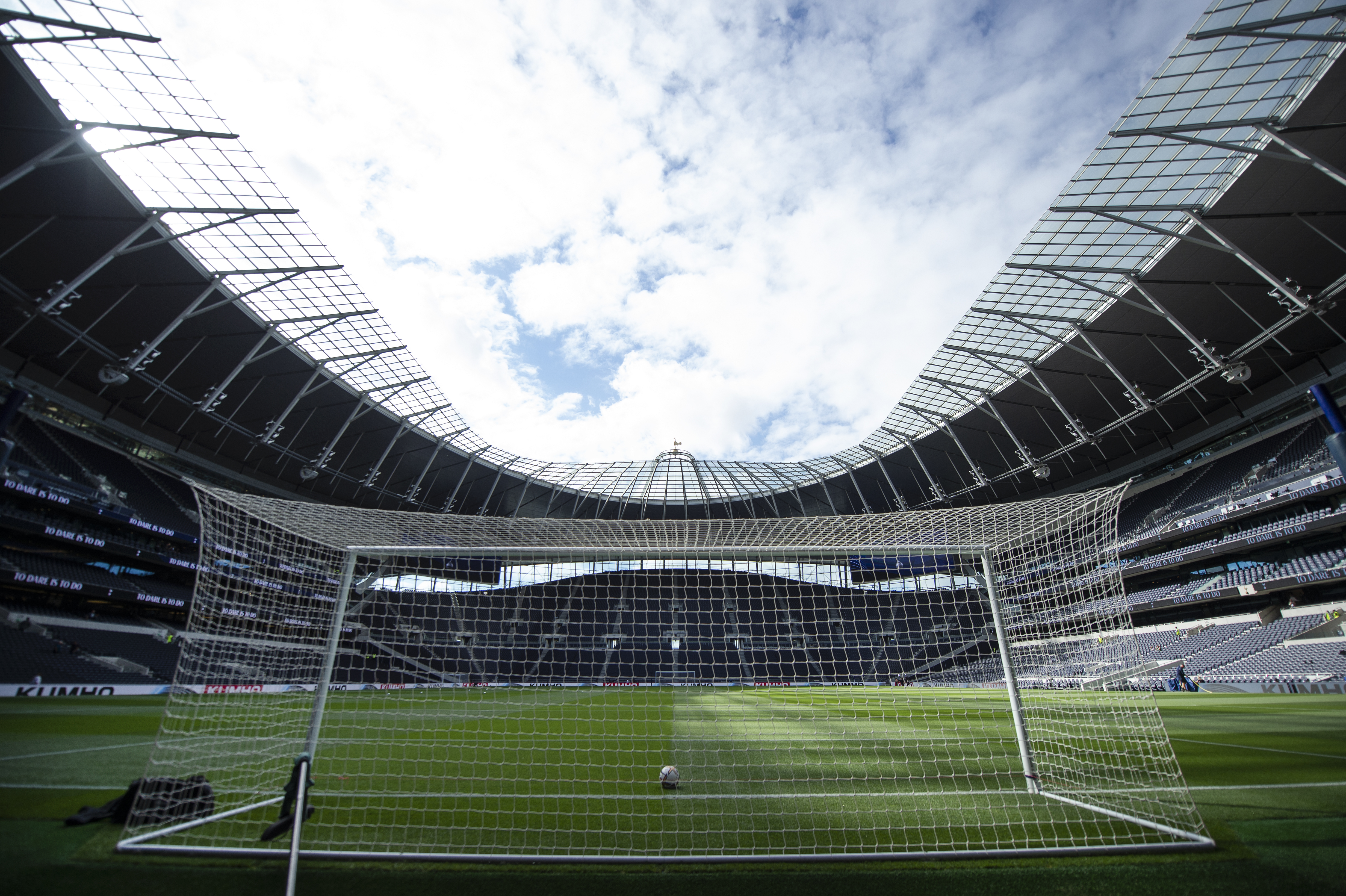
It cost over a billion pounds. It was delivered late. But there's no denying that there is nothing like the Tottenham Hotspur Stadium.
The gadgetry and optional extras dominate discussions to this day: so let's get that out of the way sharpish. Yes, there's an on-site brewery with pint cups which fill from the bottom and gastro bars are dotted around the ground. The football pitch packs itself away in the car park when the NFL comes to town – and there are specific dressing rooms for American football players, too. And you may have noticed that even the screens are mammoth: well, two of them are the biggest in Europe. The hospitality sections are state-of-the-art, as you'd expect; the pitch is lush and the seats are fantastically comfortable.
But where Tottenham have truly delivered far and beyond is in the giant kop end: it towers over London and is held by two giant tree-like beams, like Atlas's bare hands holding the sky aloft over the population. The concert-hall acoustics, enclosed corners and placement of the stands create a wall-of-sound effect: useful, for example, on Beyonce's recent Renaissance tour – or when tens of thousands of Lilywhites boom that the Spurs are marching in.
No one has built something quite so ambitious in the beautiful game: not even Bill Nicholson. The scale and grandeur of the thing is utterly breathtaking. And as the crown jewel of a redevelopment project in a corner of north London that was rioting 12 years ago, it's rooted firmly in its community; architecturally, in the fan experience. Yes: it was fully and utterly worth every penny and second that Tottenham spent and waited. – MW
7. Camp Nou
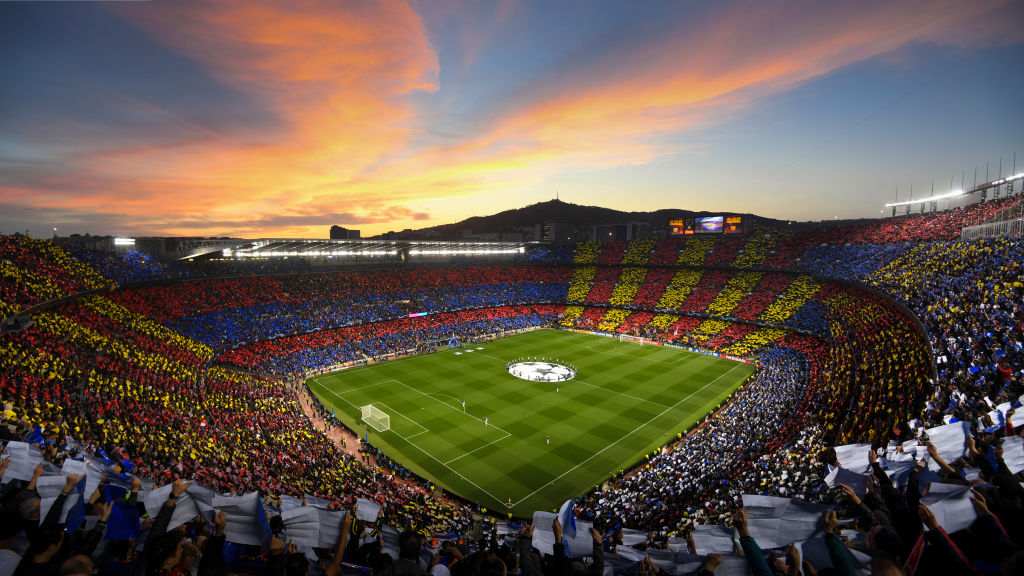
📍 Barcelona, Spain
🏠 1957
🏟 99,354
On June 1950, Barcelona bought Laszlo Kubala – and changed forever as a result. So good was the Hungarian forward, so many goals did he score, so much hope did he bring to a tortured region, that within four years a new stadium had to be built to accommodate all the fans who wanted to watch Kubala.
In an era when the Guardia Civil – the armed division of the Spanish police responsible for maintaining Francoist order, even through assassination – could arrest somebody for speaking Catalan in public, the Camp Nou became the only place where the regional language could be heard, out of earshot of the despised triangular-hatted authorities. Cheering the home side in their shiny new stadium – which celebrated two Liga titles in its first three seasons – was the most common expression of anti-Franco protest.
Yet the atmosphere and sense of occasion for big games, helped in the last 35 years by a footballing philosophy seldom replicated anywhere else in the world, never disappoints. Come Clasico day, everything from pig’s heads to whisky bottles and enough loose change to finance a revolution will be found pitchside. The pre-game recital of the club anthem – which ends with a guttural “Barça, Barça, Baaaaaaaarça” – adds pomp and ceremony to the cavernous bowl.
If Barcelona are més que un club, then this has always been més que un estadi: more than a ground. – AM
6. Azteca
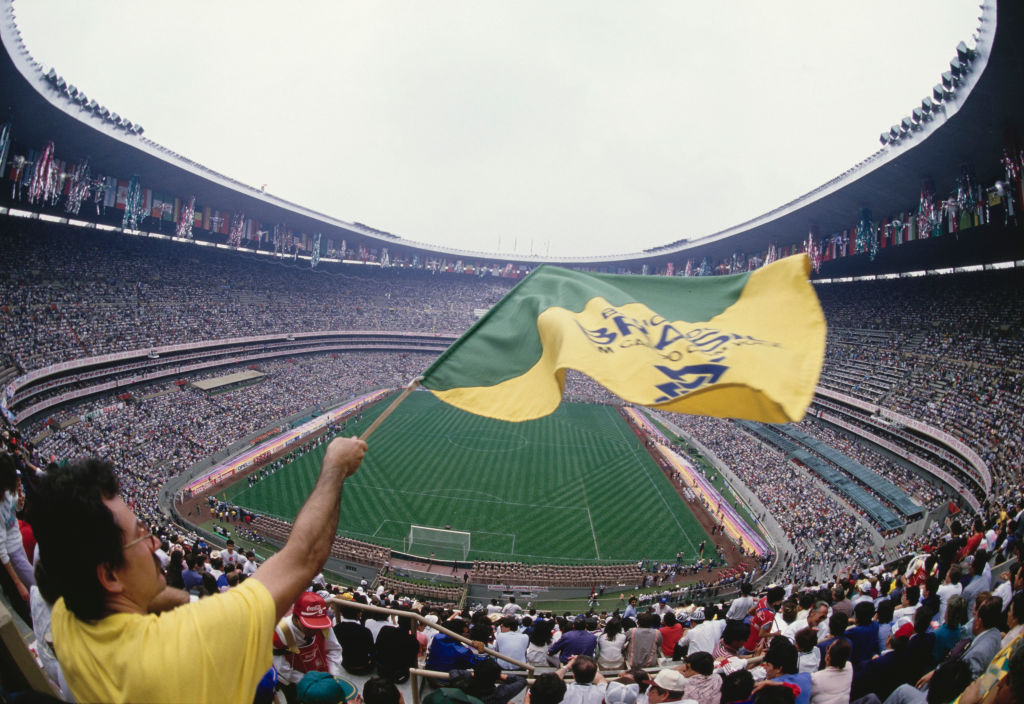
📍 Mexico City, Mexico
🏠 1966
🏟 87,523
Besides being a giant, the imposing Azteca is also famous for becoming an eyewitness to history. No other ground can claim to have been present when the sport’s two most celebrated protagonists pulled off their greatest miracles. Shakespeare said that all the world’s a stage and all the men and women merely players; the planet’s two finest footballers had their finest hours centre stage at Azteca.
Pele’s stunning athletic superiority could be seen at his peak here in 1970, as he led one of the best teams of all time, the one that included five No.10s revering the ball at all times; 16 years later, Diego Maradona’s brilliant dribbling also brought Azteca to its 230,000 feet. “And it wasn’t a pleasant experience, mind you,” complained Maradona years later. “Playing here at noon – it’s devastating, and the grass was in awful condition.”
The stadium is built on lava ground of the extinguished volcano Xitle; about 60,000 square metres were blown up with explosives in order to level the land and start the construction, in 1962. The project figures are also impressive: 12 architects working together, with 34 engineers, 15 technicians and 800 workers, day in, day out, until its completion.
And even the country’s greatest rivals are taken in by the love of it. Questioned by Mexican journalists angry at the impossibility of playing the derby against the USA on home soil, Jurgen Klinsmann happily admitted, “I would have preferred to play at Azteca, rather than in Pasadena, that’s true. It’s an amazing stadium.” – MM
5. Estadio Monumental
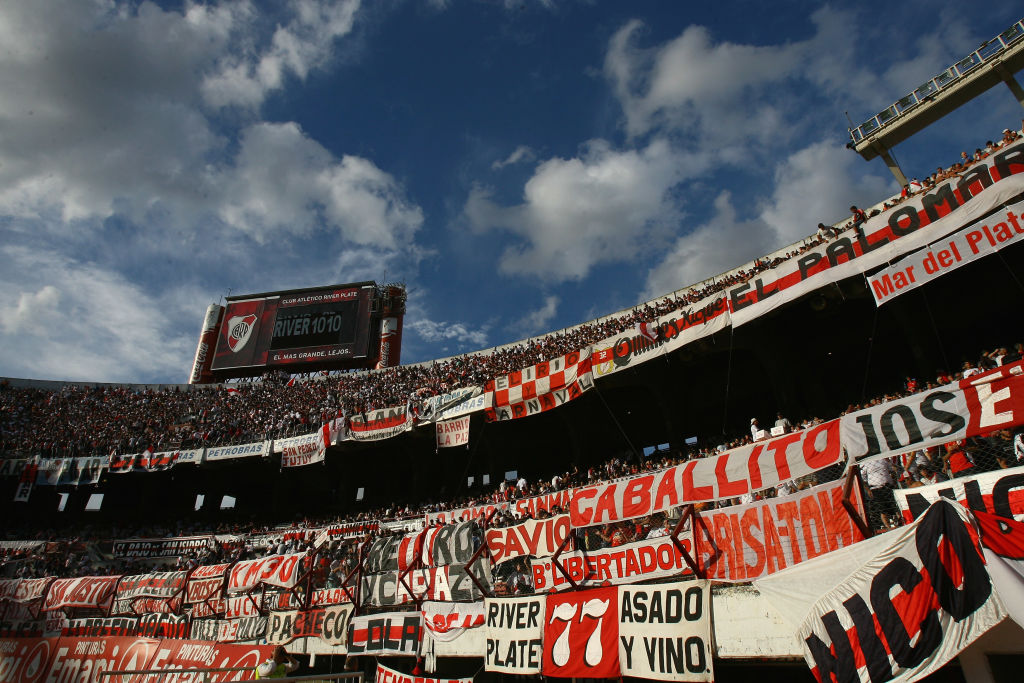
📍 Buenos Aires, Argentina
🏠 1938
🏟 86,049
There are several stadiums in Latin America known as Estadio Monumental, but this is arguably the best-known. Officially the Estadio Monumental Antonio Vespucio Liberti (after a club president), it was initially known as the Horseshoe when funds ran out before the north side was constructed.
That was when the gates first opened in 1938, and although the horseshoe was filled in, to be quite honest it could do with an upgrade in certain areas. But the fans don’t care: for a ground with no roof and an athletics track, the atmosphere – especially for the Superclasico against Boca Juniors – is truly superb, despite its capacity being barely half of what it once was. It remains Argentina’s biggest stadium and River Plate fill it with home fans due to the current away fan ban throughout the country.
At the 1978 World Cup it hosted nine matches, including the final in which Argentina beat Holland on a pitch covered in ticker-tape. Paul McCartney, Madonna and Michael Jackson, to name but a few, have played there over the years, but no tacky Tom Hark goal music is required here: celebrations are firmly taken care of by Los Millonarios’ fans. – JF
4. Ibrox
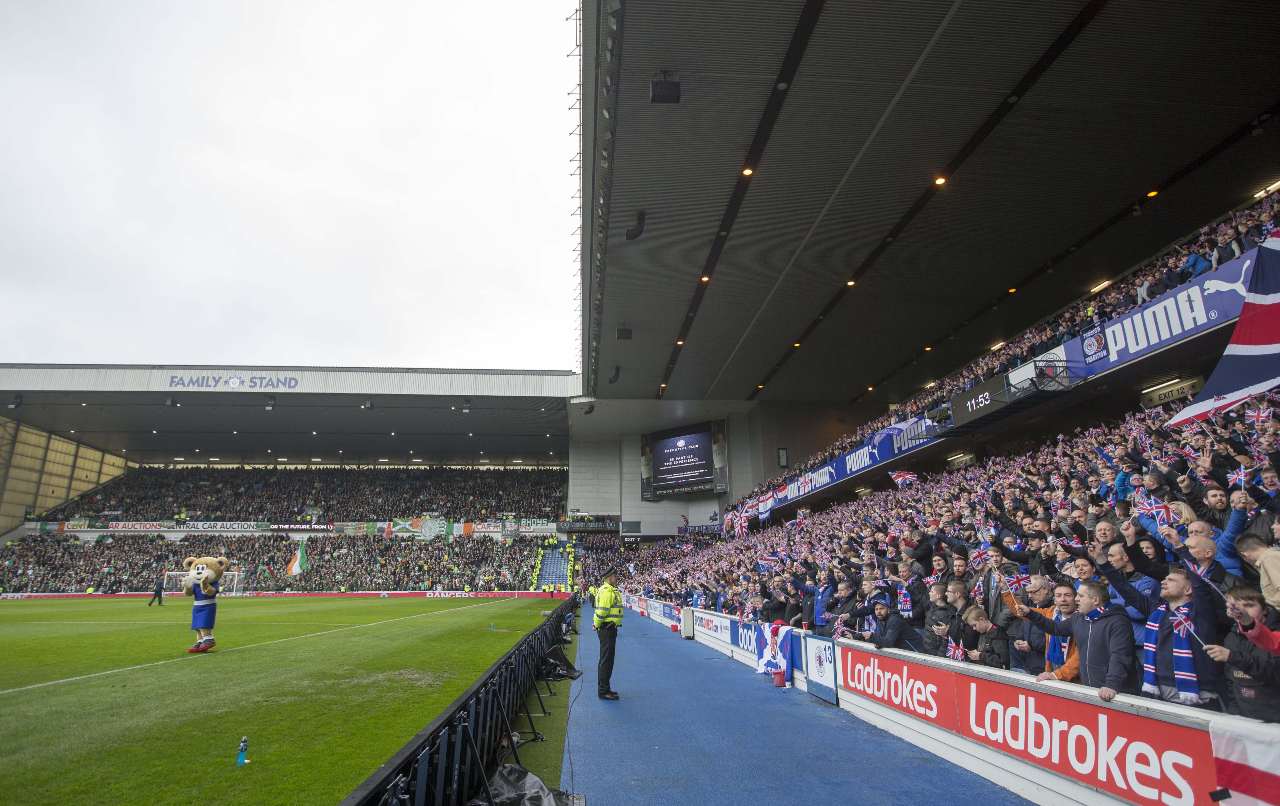
📍 Glasgow, Scotland
🏠 1899
🏟 50,817
A British record-holder – 118,567 Glaswegians gathered here for a 1939 Old Firm clash, more than for any other league match on these islands – Ibrox was one of several in the UK designed by Archibald Leitch and has hosted visitors as disparate as King George V and Frank Sinatra.
Ibrox – it means “badger ford” in Gaelic – may have housed a Scottish fourth-tier club more recently than a top-flight team but Rangers have won 52 of their 54 league titles at the venue, which can produce an atmosphere unrivalled by most British stadiums… particularly on derby day.
Following a disaster in 1971 when 66 people were crushed to death – 69 years after 25 died when a wooden stand collapsed – Ibrox was radically redesigned, its wide terraced bowl replaced by 1981 with three rectilinear all-seater stands, based on Dortmund’s Westfalenstadion.
Even so, the club retained the main stand, a Category B-listed building with a grand exterior, retaining an air of history at the home of one of the world’s most successful clubs. – CF
3. Signal Iduna Park
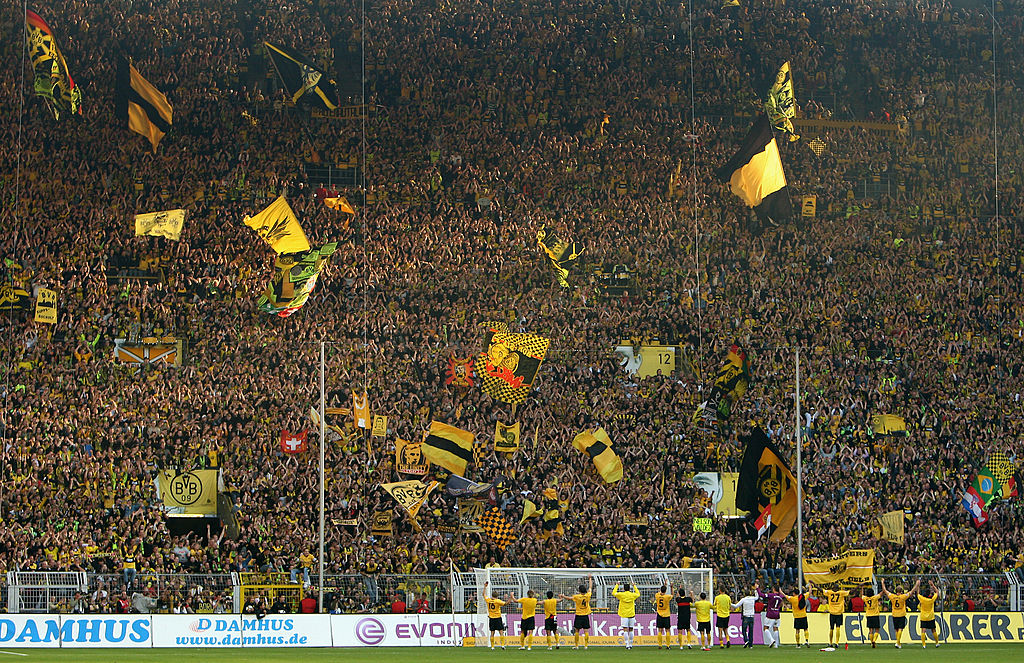
📍 Dortmund, Germany
🏠 1974
🏟 81,365
An opportunity arose when West Germany was awarded the 1974 World Cup. Dortmund applied to become a host city, knowing there would be considerable state funds to construct new stadiums. But when the city fathers received the German FA's requirements for World Cup grounds, their hearts sank. The DFB demanded a running track, a minimum capacity of 60,000 and at least 30,000 seats. Such a ground would cost 60 million Deutsche Marks (then the equivalent of £7.5m) – way too much for Dortmund, even with government support.
And so the city came up with a plan for a no-nonsense, functional and pre-fabricated ground that could hold 53,600 (more than 37,000 of them on two large but modern, safe terraces). It would, of course, have no running track and cost only 33 million Marks. The DFB was underwhelmed: Cologne, the country’s fourth-biggest city, got the nod instead – but when Cologne had surprisingly withdrawn its World Cup application due to escalating costs. With the tournament less than three years away, the DFB had no choice but to give Dortmund the green light.
At one stage, Dortmund seriously considered turning both the borth and south stand into seated terraces, in line with UEFA's all-seater rule: ultimately, the club made the terrace even bigger. BVB bought the stadium from the city and added tiers to all four stands between 1996 and 1998. The Sudtribune, which soon came to be known as the Yellow Wall, now held 24,454 and was the largest terrace on the continent. Now look at it: a legend in the European game and a quintessentially German experience.
All's well that ends well. Signal Iduna Park has since become such an iconic destination that it's estimated that the old ground attracts more than a thousand fans from England to every game. It’s not just people from Dortmund that have a special relationship with the ground. – UH
2. Maracana
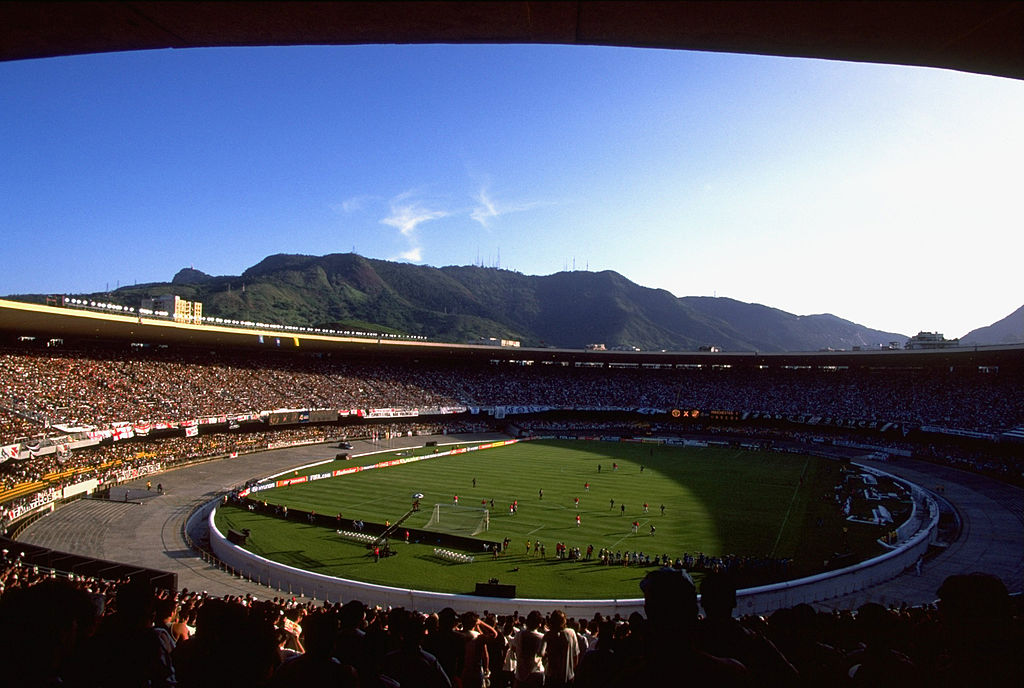
📍 Rio de Janeiro, Brazil
🏠 1950
🏟 78,838
A synonym for grandness, Maracana has every right and credential to feel it is the greatest stadium in the world. No other football ground can claim to have received almost 200,000 paying spectators in one game. The 1950 World Cup final game against Uruguay set that record, almost matched by the 194,603 who came for the 1964 Carioca derby between Rio’s two most popular clubs, Flamengo and Fluminense.
If Brazil’s passion for football is known worldwide, it’s partly thanks to this football shrine that became a symbol of exquisite football perfected under dancing crowds, in competitions from the Carioca tournament, the Brasileirao, Copa Libertadores, to the World Club Championship, Confederations Cup and World Cup.
It's hard to believe now that the stadium’s location was controversial, to say the least. Congressmen argued over the location for the ring-shaped centrepiece stadium of the 1950 World Cup. In the end, rather than being built in a neighbourhood, the stadium has helped to build a neighbourhood. Now, Maracana is the stadium, the surrounding area and a very convenient metro stop.
Originally built for a World Cup that ended in emotional disaster, and built so badly that it ended in actual disaster, the Maracana has been so extensively rebuilt that it is now barely the same stadium. But it retains its iconic status through its ringed roof, its ambience and its history. And that’s more than enough to pay a visit. – MM
1. La Bombonera
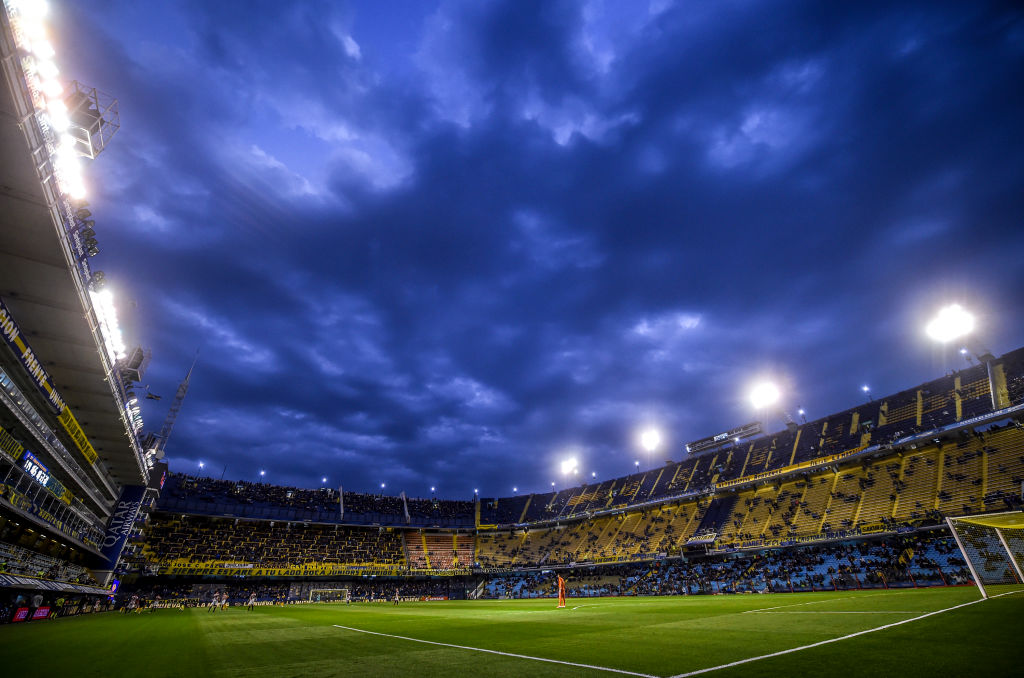
📍 Buenos Aires, Argentina
🏠 1940
🏟 54,000
It’s an architectural wonder, a footballing pilgrimage that all supporters should make at least once in their life. And it came about thanks to a lack of space. The land that the club had for its small wooden stadium, stuck in the middle of the vibrant neighbourhood of La Boca, wasn’t big enough to build a huge concrete stadium for Argentina’s best-supported club, Boca Juniors.
But rather than look somewhere else and face the upheaval of leaving their spiritual home, the club came up with a solution for building a suitably sized stadium on the existing land. Their ambitious plan, conceived in 1934, consisted of three tiers and, with space at premium, a soaring vertical stand made up of seating areas stacked on top of each other.
The result was a distinctive D-shaped stadium with wonderful acoustics, a passionate cauldron that earned the nickname La Bombonera (or the Chocolate Box). The stadium is a temple of world football, according to the admittedly rarely understated Diego Maradona, who played here in 1981, again between 1995 and 1997, and then chose the stadium for his testimonial match where he lined up alongside Hristo Stoichkov, Ciro Ferrara and Davor Suker, among others.
Just watching the Boca crowd, el Jugador Numero 12 (the 12th player), can be worth the entrance fee, even in the dullest of 0-0 draws. Among the seething mass of fans singing and jumping, those standing on the avalanche barriers are the barra bravas, Argentine ultras who run a lucrative sideline charging European tourists for the “adrenaline tour” that allows them to become a Boca ultra for a day.
A popular Argentine saying claims that La Bombonera no tiembla, late: the Bombonera does not tremble, it beats. It’s a living, breathing stadium. The combined effect of the fans singing, clapping and (especially) jumping makes the ground vibrate like a small earthquake.
Current page: The 100 best stadiums in the world: 10-1
Prev Page The 100 best stadiums in the world: 20-11
Mark White has been at on FourFourTwo since joining in January 2020, first as a staff writer before becoming content editor in 2023. An encyclopedia of football shirts and boots knowledge – both past and present – Mark has also represented FFT at both FA Cup and League Cup finals (though didn't receive a winners' medal on either occasion) and has written pieces for the mag ranging on subjects from Bobby Robson's season at Barcelona to Robinho's career. He has written cover features for the mag on Mikel Arteta and Martin Odegaard, and is assisted by his cat, Rosie, who has interned for the brand since lockdown.
